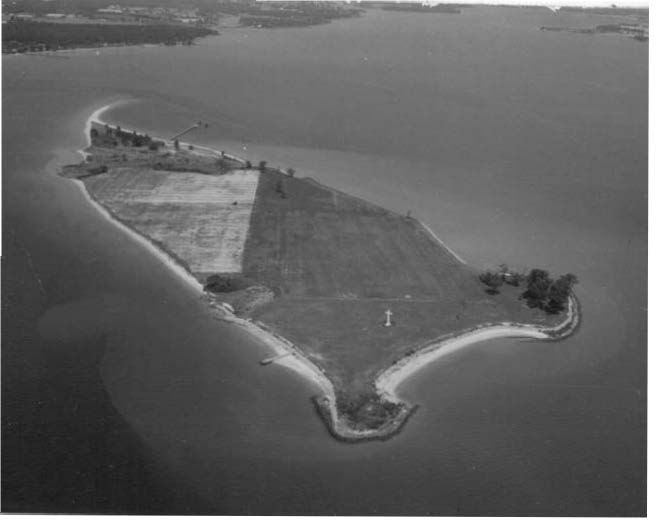Get your Maryland flag hoodies, socks, scarves, and sunglasses on! Maryland Day is celebrated this weekend! Read the brief history of the Old Line State here to impress your friends:
Brief History of Maryland Day
Maryland Day commemorates the March 25, 1634 founding of the land that would become Maryland. Approximately 140 colonists aboard the ships Ark and Dove landed at St. Clement’s Island in the Potomac River. It had been a tumultuous journey. Shortly after departing from the Isle of Wight on November 22, 1633, the Dove was lost in a severe storm. The Ark sailed to the Canary Islands, then due west to the Island of Barbadoes in the West Indies. Amazingly, the Dove rejoined the Ark and the entire party sailed to Virginia. After replenishing supplies, they moved north up the Chesapeake Bay to the Potomac. They named the island where they landed after St. Clement, the patron saint of mariners.

St. Clement’s Island, 1969. Photo from Maryland Historical Trust.
Led by Leonard Calvert, they settled on the land of the Yaocomico people and founded the town of St. Mary’s. King Charles I of England had granted George Calvert, the first Lord Baltimore, extensive privileges in the 1632 Charter of Maryland, but George died before he was able to settle the colony. His eldest son Cecil, the second Lord Baltimore, inherited the privileges of the charter and set up his younger brother Leonard to govern the new land. Cecil Calvert envisioned Maryland colony as essentially a replica of English town settlements, containing organized streets and houses with adjoining gardens. But the settlers quickly moved outside the town of St. Mary’s to make their own homesteads, engaging in trade with the Native Americans and planting different crops, including the cash crop tobacco.
While the Calverts, devout Roman Catholics, wanted Maryland to be a place of greater toleration for Catholicism, the majority of the first settlers were Protestants. Disagreement over which form of religion was to have greater influence eventually stirred strong anti-Catholic sentiment in the colony. Protestant Governor William Stone responded in 1649 with the so-called Toleration Act, which imposed penalties for the persecution of anyone professing the Christian religion. When Protestants gained control of the government five years later, however, the Act was repealed. After the Glorious Revolution in England, the religion of the Church of England became the only tolerated form of religion. Despite its limited success, the Toleration Act was a forerunner of the greater religious toleration of the Frame of Government of Pennsylvania of 1682 and a noteworthy contribution to the history of early America. On the tri-centennial of Maryland’s founding, Governor Albert Ritchie dedicated a monument on St. Clement’s Island to commemorate Maryland’s contribution to religious freedom.

In 1903, the State Board of Education selected March 25 as Maryland Day in its effort to promote better teaching about Maryland’s history in the public school curriculum. The General Assembly established Maryland Day as an official state holiday in 1916.
The Four Rivers Heritage Area in Anne Arundel County is hosting and sharing a weekend full of events that are free or just $1 dollar. A perfect weekend of events for the family to enjoy as you celebrate Maryland’s Birthday. Look for events: marylandday.org.

